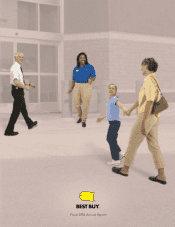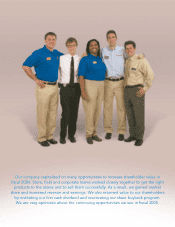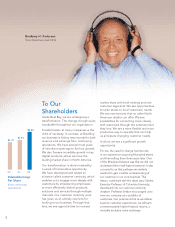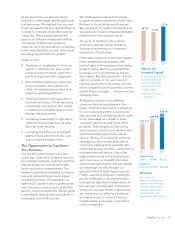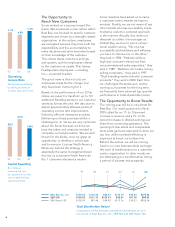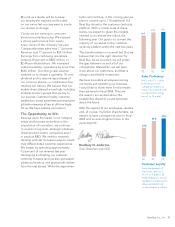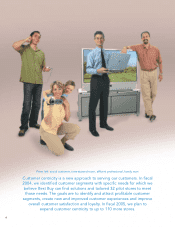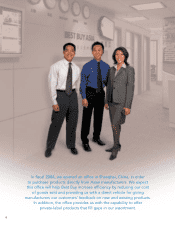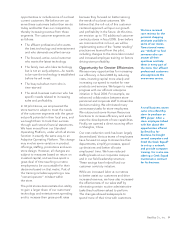Best Buy 2004 Annual Report Download - page 4
Download and view the complete annual report
Please find page 4 of the 2004 Best Buy annual report below. You can navigate through the pages in the report by either clicking on the pages listed below, or by using the keyword search tool below to find specific information within the annual report.
To Our
Shareholders
Inside Best Buy, we are undergoing a
transformation. The change, though quiet,
is palpable throughout our organization.
Transformation at many companies is the
child of necessity. In contrast, at Best Buy,
our business is hitting new records for both
revenue and earnings from continuing
operations. We have several more years
of new-store openings to fuel our growth.
We also foresee incredible growth in key
digital products, where we have the
leading market share in North America.
Our transformation is driven instead by
a sense of tremendous opportunity.
We have developed and tested an
initiative called customer centricity, which
enables us to engage more deeply with
customers by empowering employees
to more effectively deliver products,
solutions and services through multiple
channels. Our customer centricity work
has given us an entirely new lens for
looking at our business. Through that
lens, we see opportunities to increase
market share with both existing and new
customer segments. We see opportunities
to tailor stores to local customers’ needs.
We see new services that no other North
American retailer can offer. We see
possibilities for connecting more closely
with customers through the entertainment
they love. We see a more flexible and more
productive way to operate that can help
us anticipate changing customer needs.
In short, we see a significant growth
opportunity.
For me, the case for change had its roots
in our experience acquiring Musicland stores
and then selling them three years later. One
of the Musicland lessons was that we did not
understand their mall-based customer. It also
occurred to us that perhaps we similarly
needed to gain a better understanding of
our customer in our core business. This
lesson, combined with the ideas Larry Selden,
Emeritus Professor of Columbia University,
developed into our customer centricity
initiative. Professor Seldon encouraged us to
view our company as a portfolio of
customers. Our premise is that as we deliver
superior customer experiences, we will earn
commensurately higher financial returns, a
mutually exclusive value exchange.
2
Bradbury H. Anderson
Vice Chairman and CEO
02 03 04
Diluted Earnings
Per Share
(from continuing
operations)
$1.77 $1.91
$2.44

